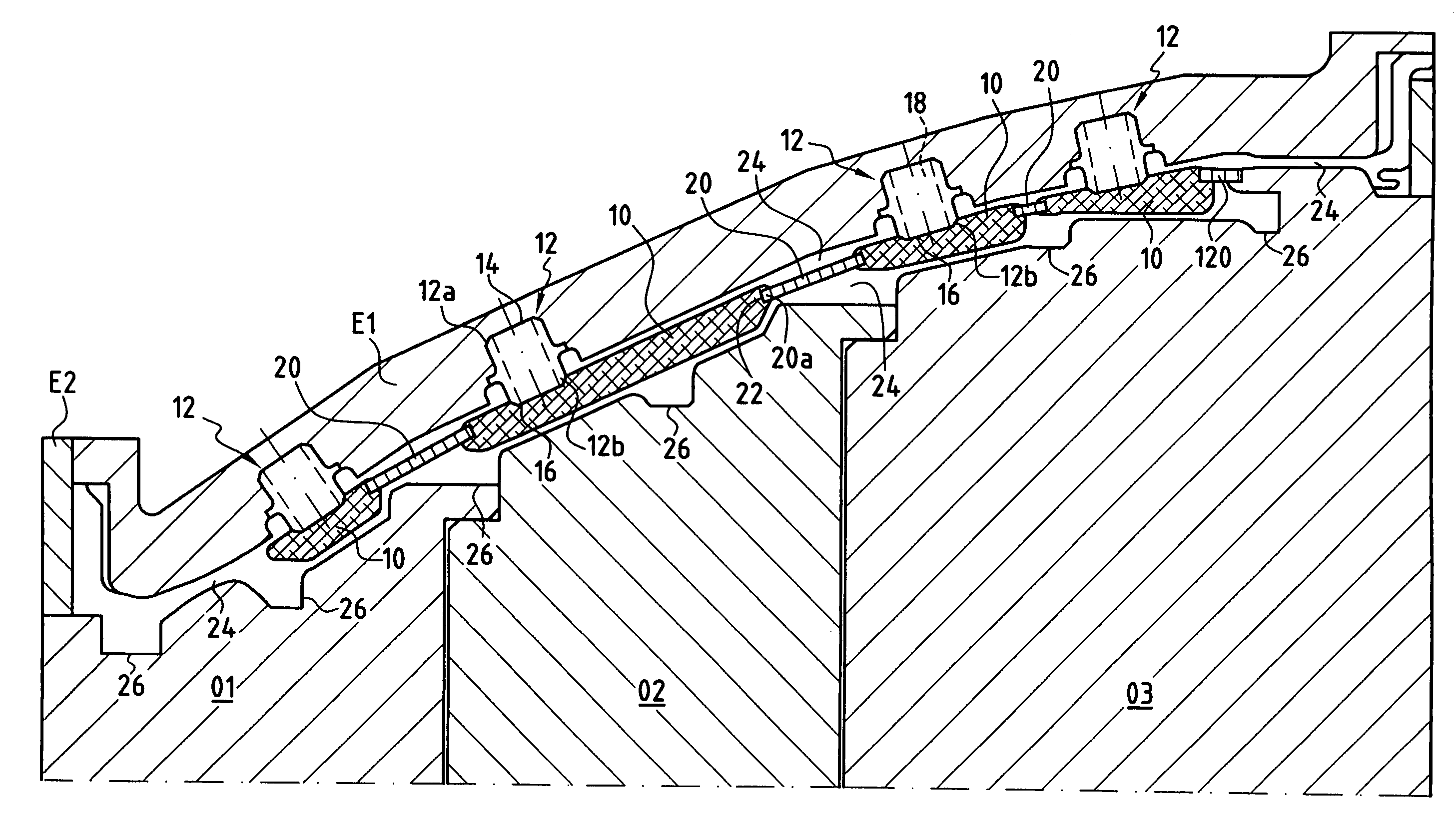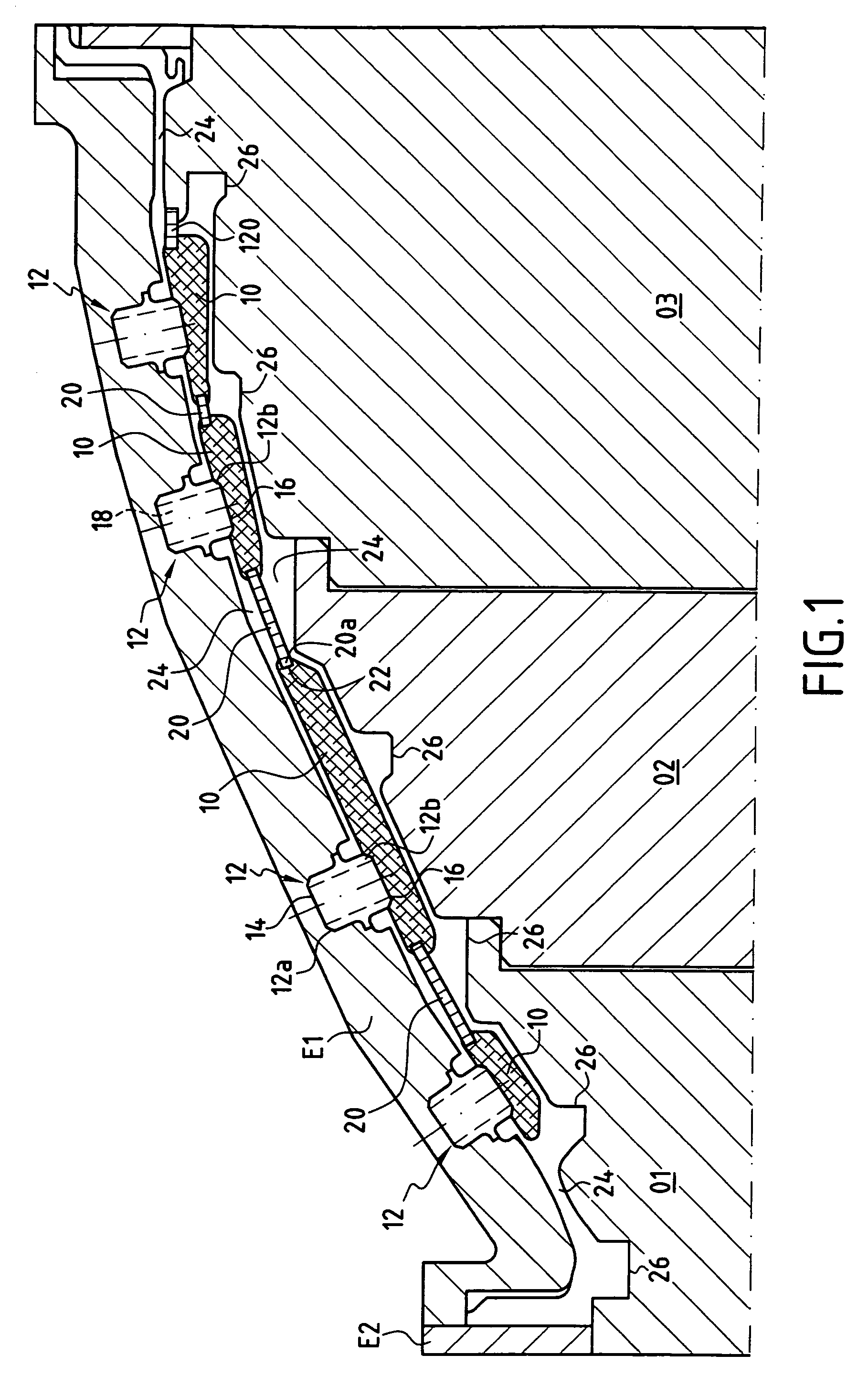Method of fabricating a casing for turbine stator
a casing and stator technology, applied in the direction of turbines, liquid fuel engines, forging/pressing/hammering apparatus, etc., can solve the problems of not enabling the reduction of the heating of the shroud, the bulky equipment, and the lack of significant reduction of the manufacture. , to achieve the effect of good mechanical properties and good dimensional precision
- Summary
- Abstract
- Description
- Claims
- Application Information
AI Technical Summary
Benefits of technology
Problems solved by technology
Method used
Image
Examples
Embodiment Construction
[0026]The tooling shown in FIG. 1 comprises a mold made up of several parts. Five of the parts are shown: three inner parts O1, O2, and O3, and two outer parts E1 and E2. The design of these mold parts is very precise. This design is computer-assisted and takes account of the local shrinkage that occurs during hot isostatic pressing. This particular HIP technique is better known under the name “Isoprec® method” (registered trademark), and enables a casing shroud to be obtained directly to its design dimensions, thereby limiting any subsequent machining thereof.
[0027]Cores 10 made of a material that is soluble in a particular solvent are secured to the outer mold shroud portion E1 by tubular pegs 12. These pegs 12 hold the cores 10 in position, where the empty spaces 110 for passing a flow of cool air are to be located in the thickness of the shroud 105.
[0028]Each core 10 is in the form either of a ring, or a ring segment (each segment being suitable for being placed end to end with ...
PUM
| Property | Measurement | Unit |
|---|---|---|
| temperatures | aaaaa | aaaaa |
| temperature | aaaaa | aaaaa |
| pressure | aaaaa | aaaaa |
Abstract
Description
Claims
Application Information
 Login to View More
Login to View More - R&D
- Intellectual Property
- Life Sciences
- Materials
- Tech Scout
- Unparalleled Data Quality
- Higher Quality Content
- 60% Fewer Hallucinations
Browse by: Latest US Patents, China's latest patents, Technical Efficacy Thesaurus, Application Domain, Technology Topic, Popular Technical Reports.
© 2025 PatSnap. All rights reserved.Legal|Privacy policy|Modern Slavery Act Transparency Statement|Sitemap|About US| Contact US: help@patsnap.com



